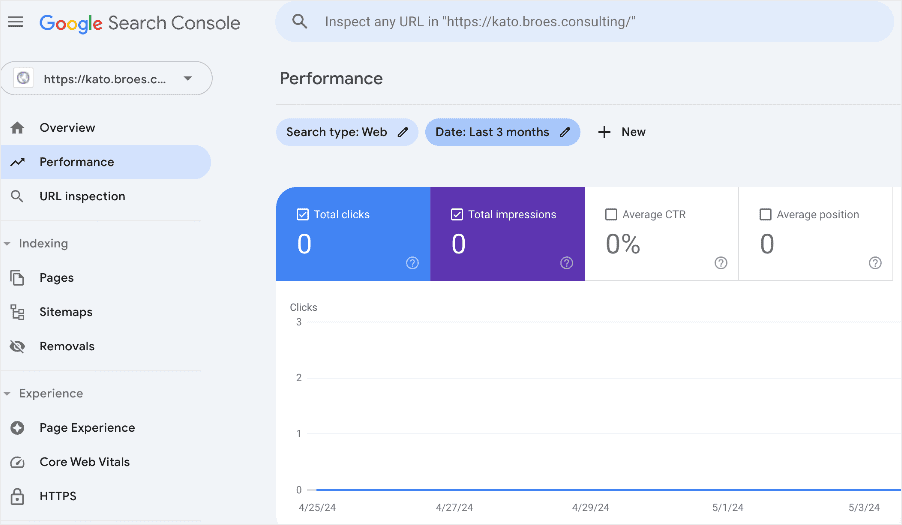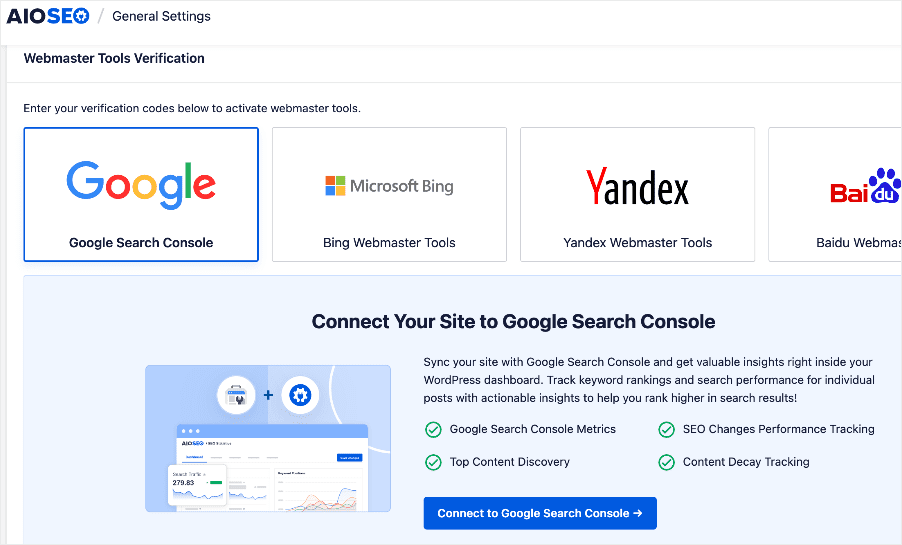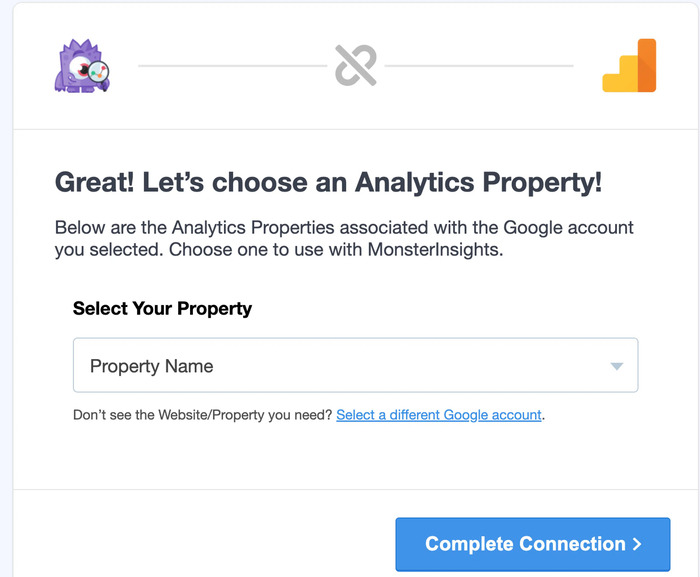What’s the difference between Google Search Console vs. Google Analytics?
Google offers powerful tools to help website owners understand their online presence and performance. Two of the most popular tools are Google Search Console (GSC) and Google Analytics (GA4). While they both provide valuable insights, they serve different purposes and track different metrics.
In this article, we'll explore the key differences between Google Search Console and Google Analytics and how you can use them to optimize your website's performance.
In This Article
- Google Search Console (GSC): An Overview
- Google Analytics (GA4): An Overview
- Google Search Console vs. Google Analytics: 9 Key Differences
- Google Search Console vs. Google Analytics: Can They Be Used Together
- Google Search Console vs. Google Analytics: Your FAQs Answered
Google Search Console (GSC): An Overview
Google Search Console (GSC) is a free tool provided by Google that helps website owners monitor their site's performance in Google Search results. It provides insights into how Google crawls, indexes, and displays your website on search engine results pages (SERPs). GSC primarily focuses on search-related data and can help identify and resolve technical issues affecting your site's visibility in Google Search.

What Can You Do with Google Search Console?
With Google Search Console, you can perform various tasks and access valuable data related to your site's performance in Google search. Some of the key things you can do with Google Search Console include:
Monitor and Maintain Site Presence in Google Search
- Check if Google can access and crawl your site properly
- Submit new content for crawling and indexing
- Remove outdated or unwanted content from Google's index
- Monitor and fix crawl errors and site issues
Analyze Search Performance
- See which search queries bring users to your site
- Track impressions, clicks, and clickthrough rates (CTRs) for specific pages and queries
- Identify top-performing pages and content
- Monitor your average position in search results for specific queries
Troubleshoot and Improve Search Visibility
- Identify and fix indexing issues, crawl errors, and security issues. These can reduce your search visibility.
- View and test structured data markup (rich results).
- Check for mobile usability issues.
- Monitor and address manual actions or penalties imposed by Google.
Manage Sitemaps
- Submit sitemaps and test them
- Monitor sitemap status and errors
Configure Data Sharing and Settings
- Verify ownership of your website
- Set a preferred domain (www or non-www)
- Allow or restrict data sharing with other Google products
Receive Notifications and Messages
- Get alerts about critical issues or manual actions
- Receive messages from the Google Search team
Integrate With Other Tools
- Link Google Search Console with Google Analytics to see search data in Google Analytics.
- Use the Search Console API to automate tasks and integrate data into other tools.
Overall, Google Search Console provides valuable insights into how Google crawls, indexes, and ranks your site in search results, helping you diagnose and fix issues hindering your site's search performance.
Google Analytics (GA4): An Overview
Google Analytics (GA4) is a powerful web analytics platform that tracks and reports website traffic. It provides detailed information about user behavior, audience demographics, acquisition channels, and conversion rates. GA4 (the latest version of Google Analytics) uses advanced machine learning models to provide deeper insights into user journeys and predictive metrics.

What Can You Do With Google Analytics?
Google Analytics provides a powerful toolbox to understand how users interact with your site. Here's a breakdown of what you can achieve with GA4:
Website Traffic Analysis
- Track traffic sources: Identify where your visitors come from, whether it's organic traffic, social media referrals, paid advertising, email marketing, or direct traffic.
- User journey: Understand user behavior, such as how visitors navigate your site, which pages they visit, and the sequence of their actions. This helps you identify popular content, optimize user flow, and pinpoint areas where users might be dropping off.
- Engagement metrics: Analyze metrics like page views, bounce rate (percentage of visitors leaving after one page), and session duration to gauge user engagement with your website.
Understanding User Behavior
- Demographics and interests: Gain insights into your audience's demographics, such as age, location, and interests. This will help you tailor your content and marketing strategies to resonate better with your target audience.
- Conversions and goals: Track conversions, which are specific actions you want users to take on your website, such as purchasing, signing up for a newsletter, or downloading a file. You can set up goals in GA4 to measure your site’s effectiveness in driving conversions.
- Custom events: Track specific user interactions beyond page views, like button clicks, video plays, or form submissions. This provides a deeper understanding of how users engage with different elements on your website.
Additional Features
- Custom reports and dashboards: Create custom reports and dashboards to focus on the metrics that matter most to your business.
- Data segmentation: Segment your user data based on various criteria, such as demographics, traffic source, or device type, to gain a more granular view of user behavior.
- Integrations: GA4 integrates seamlessly with other Google products, such as Google Ads and Search Console, allowing you to connect the dots between your website traffic, marketing campaigns, and search engine optimization efforts.
Overall, Google Analytics empowers you to make data-driven decisions to improve your website's performance, user experience, and, ultimately, business goals.
Google Search Console vs. Google Analytics: 9 Key Differences
While both tools are valuable for website owners, they serve distinct purposes and offer different functionalities. Here are some of the main differences between Google Search Console and Google Analytics:
1. Verification
Google Search Console (GSC)
GSC offers multiple verification methods to confirm your site's ownership. These include uploading an HTML file to your website, adding a meta tag to your site's code, verifying ownership through a Google Search Console verification plugin (if you use a content management system like WordPress), or associating your Google Analytics account with GSC (if it's on the same domain).
However, the easiest way to verify your site with GSC is to use AIOSEO.

AIOSEO is the best WordPress SEO plugin on the market. Over 3 million savvy website owners and marketers trust it to help them dominate the SERPs (search engine results pages) and drive relevant site traffic.
The plugin has many powerful SEO features and modules to help you optimize your site for search engines and users, even without coding or technical knowledge. One of the most loved is the Webmaster Tools section. This makes it super easy to verify your site with GSC.

It offers a no-code verification process where you only need to click a few buttons.
For more tips, you can check out our tutorial on manually setting up Google Search Console on your site.
Google Analytics (GA4)
GA4 typically uses a tracking code snippet placed on all pages of your website. This code collects data on user behavior and sends it to Google Analytics for processing.
However, the easiest way to verify your sites with GA is to use MonsterInsights. This is the best Google Analytics plugin for WordPress users.

Once connected, you can go to MonsterInsights Dashboard » Insights » Reports to see how your site is doing.
However, if you prefer the slightly longer method, check out this tutorial on adding Google Analytics to your site.
2. Purpose of Use and Audience
Google Search Console (GSC)
GSC primarily caters to website owners and SEO professionals interested in optimizing their website's visibility in SERPs. It helps them understand how search engines crawl and index their website, identify and fix technical issues, and track the performance of their content for specific keywords.
Google Analytics (GA4)
GA4 targets a broader audience, including marketers, content creators, and website owners. It provides insights into user behavior on your website, regardless of how they arrived there. This allows you to understand what content resonates with your audience, how they navigate your website, and where there might be opportunities to improve their experience.
3. Data Acquisition and Reporting
Google Search Console
GSC primarily gathers data from Google searches. This includes information on:
- How often your site appears in search results for specific keywords (impressions)
- How many users click on those results (clicks)
- Your website's click-through rate (CTR)
- Your average ranking for those keywords
Check out our guide on importing Google Search Console keywords to see how you can get more keyword data.
Google Analytics
GA4 collects data from various sources, these include:
- Search engines (organic traffic)
- Social media platforms (referral traffic)
- Email marketing campaigns
- Paid advertising (paid traffic)
- Direct website visits
This provides a more comprehensive picture of your website's overall traffic and user behavior.
4. Traffic Sources
Google Search Console
GSC focuses specifically on organic traffic coming from Google searches. It helps you understand which keywords users are searching for to find your website and how your site performs for those searches.
Google Analytics
GA4 provides a more comprehensive breakdown of traffic sources, including organic search, paid search, social media referrals, email marketing campaigns, and direct website visits. This lets you see which digital marketing channels drive the most traffic to your website.
5. Metrics Tracked
Google Search Console
GSC tracks search-related metrics like impressions, clicks, click-through rates (CTRs), and average position in SERPs for specific pages and queries. This data is crucial for fine-tuning your SEO strategy ensuring your content ranks higher.
Google Analytics
GA4 tracks a wide range of user behavior and site performance metrics. This includes page views, bounce rates, conversion rates, session duration, and user engagement metrics like scroll depth and click events.
The data you get from GA4 helps you target the right traffic acquisition channels. It also helps boost your clickthrough rates and other engagement metrics.
6. Clicks and Sessions
Google Search Console
GSC measures individual clicks on search results for specific keywords. This helps you understand how often users see your site listed in search results and how likely they are to click on it.
Google Analytics
GA4 goes beyond clicks and groups user interactions into sessions. A session is a group of user actions on your site within a set timeframe (usually 30 minutes). This provides a broader view of user activity, allowing you to see how users navigate your site and how long they engage with your content.
7. Error Monitoring and Reporting
Google Search Console
GSC identifies crawling and indexing issues affecting your site's visibility in search results. Specifically, it can alert you to:
- Crawl errors: These occur when Google's search engine crawler encounters problems accessing or fetching content on your website. Examples include broken links, server errors, or robots.txt blocking important content.
- Index coverage: GSC provides insights into how many of your website's pages have been successfully indexed by Google. It can also report on pages encountering indexing issues and why they might not be included in search results.
- Mobile usability problems: This refers to issues that make it difficult for users to access and interact with your site on a mobile device. Mobile SEO is essential as mobile is fast overtaking desktop regarding search.
- Security issues: GSC can warn you of potential security vulnerabilities on your website, such as malware or phishing attempts. Addressing these issues is crucial for maintaining a safe and secure website for your visitors.
Not only does GCS highlight these issues, but it also helps you diagnose and fix these technical problems.
Google Analytics
GA4 focuses on site functionality and user experience (UX) but doesn't directly report on crawling or indexing issues. However, by analyzing user behavior data in GA4, you may identify areas where users struggle to navigate your site or complete desired actions. This indicates potential website functionality issues. Examples include:
- High bounce rate: If certain pages on your website have a high bounce rate (users leaving after one page), it might indicate usability problems that are causing users to abandon the page quickly.
- Low engagement time: Similarly, pages with low average session duration could suggest users are struggling to find the information they need or that the content is not engaging them.
- Click tracking and heatmaps: GA4 features like click tracking and heatmaps can reveal how users interact with your website. They can identify areas where users might
Addressing the root cause of these issues can improve your site’s performance, resulting in better engagement metrics.
8. Default Time Zone
Google Search Console
GSC uses the time zone associated with your Google account. This can be inconvenient if your target audience is located in a different time zone.
Google Analytics
GA4 allows you to set a custom time zone for data reporting. This ensures that your site traffic and user behavior data is displayed in the time zone that is most relevant to your business.
9. Integrations
Both GSC and GA4 integrate with other Google products, such as Google Ads (for managing online advertising campaigns) and Google Optimize (for A/B testing different website variations). They also integrate with various third-party platforms, allowing you to connect your website data with other marketing and analytics tools.
Google Search Console vs. Google Analytics: Can They Be Used Together
While Google Search Console and Google Analytics serve different purposes, they can be used together to gain a comprehensive understanding of your site's performance. By integrating data from both tools, you can identify areas for improvement and optimize your site's visibility and UX. This is essential in helping you make data-driven decisions to drive better results.
Google Search Console vs. Google Analytics: Your FAQs Answered
Which tool should I prioritize if I have limited resources?
If you're primarily focused on search engine optimization (SEO) and improving your site's visibility in Google Search, prioritize Google Search Console. If your main goal is understanding user behavior and optimizing conversion rates, prioritize Google Analytics.
What is the easiest way to connect my site to Google Search Console?
The easiest way to connect your site to Google Search Console is to use a WordPress SEO plugin like All In One SEO (AIOSEO). It has a feature that allows you to connect your site with a few clicks of a button.
Google Search Console vs. Google Analytics: Which tool should I use first?
If you're just starting out, focus on GSC to ensure proper website indexing and identify potential SEO issues. Once your website is well-indexed, you can delve deeper into user behavior with GA4.
We hope this post helped you understand the difference between Google Search Console and Google Analytics. You may also want to check out other articles on our blog, like how to start a small business blog or our list of the best blogging tools for WordPress.
If you found this article helpful, then please subscribe to our YouTube Channel. You’ll find many more helpful tutorials there. You can also follow us on X (Twitter), LinkedIn, or Facebook to stay in the loop.
Disclosure: Our content is reader-supported. This means if you click on some of our links, then we may earn a commission. We only recommend products that we believe will add value to our readers.

